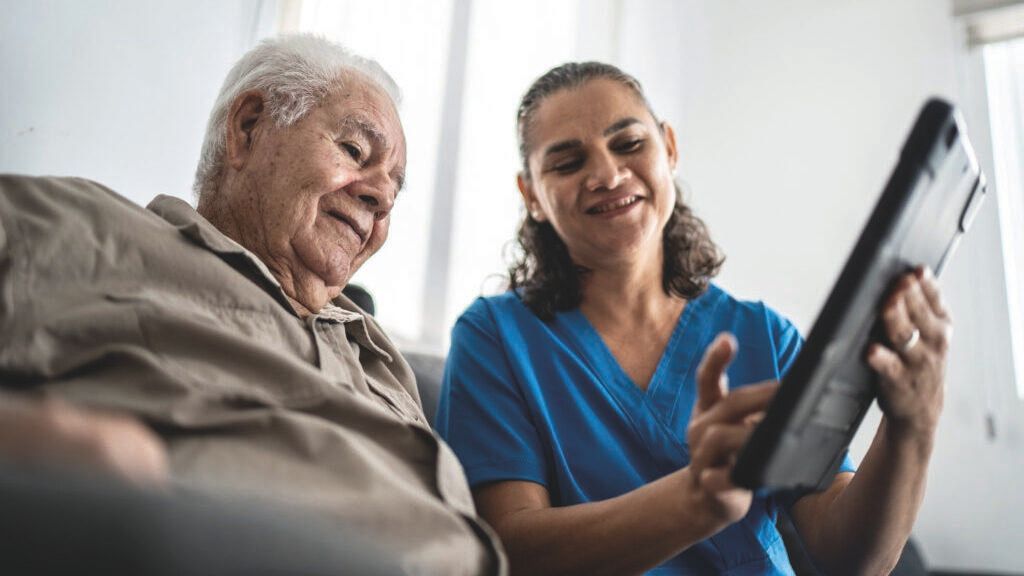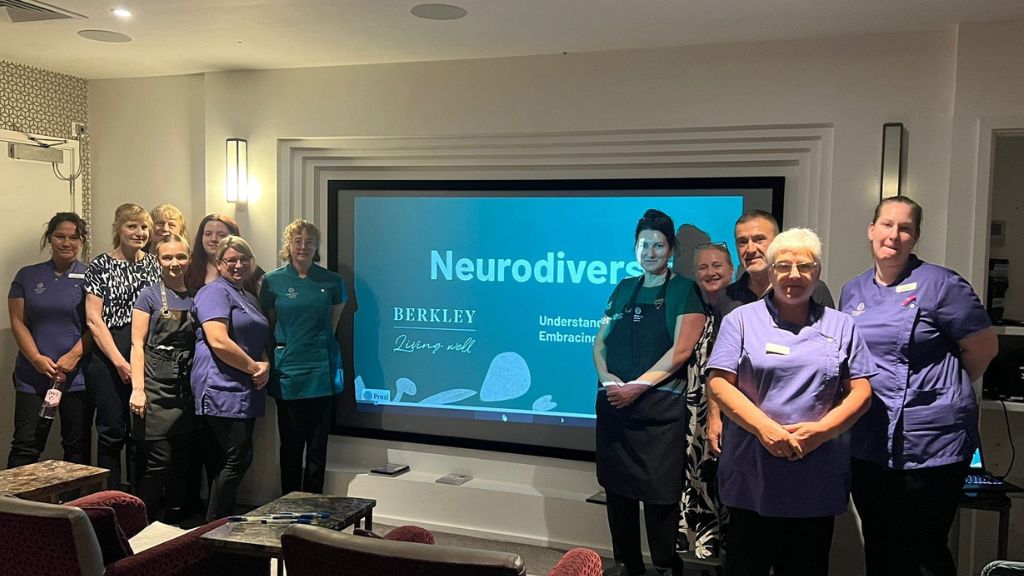Use innovation to ‘make do and mend’

Hallmark’s head of innovation Claire Johnson gives her top tips on how care homes can make the most of modern innovations without costing the earth.
CT: What do you think is the most pressing concern that innovation needs to address at the moment?
CJ: There’s going to be a lot of concern about the cost of heating
homes across the winter. When you’re looking at innovation, you have to look at the short term and the long term. If I’m looking at the short-term trend, (and I hope it is short term), it’s the cost-of-living crisis. It’s very important that homes are kept warm and comfortable and I don’t want to trivialise the fact that I think a lot of homes will be worried about the immediate future.
CT: What advice do you have for how they can cope?
CJ: We are all feeling the crunch as a sector. We are running a trial with some sensors which were primarily put in to monitor water temperature to prevent Legionella and I think the sensors will help monitor energy usage and spot hidden things. The magic that’s come out of it is that we are much more aware of our heating temperatures and whether we’re heating water at the right times of the day because we’ve got a much better insight into when people are using hot water. During some parts of the day, we’re overheating it and in other parts of the day, we’re not. There have been some surprises, for example, people are having a lot more baths and showers in the morning than we thought. If you bothered to ask everybody, they’d tell you that, but it’s putting that information all in one place and being able to see.
Sensors help care homes monitor and keep an eye on what they’re doing. I’d suggest homes go down the smart meter route and understand where they can trim, because otherwise it’s very anecdotal. I would put some data measurements in so that you can see what you’re doing because potentially your most expensive heating bills could be at 2am – and who’s up to know that? Everybody’s got a pretty good idea of what’s going on in the middle of the day, but at 2am, you might have the boiler running full tilt. Another obvious solution would be prioritising insulation.
CT: That’s your short-term innovation tip – what are you looking at longer term?
CJ: From a blue-sky point of view, I think there are some really interesting trends around the theme of being thrifty and ‘make do and mend’. One is a very early-stage company, not yet to- market, called Nu Tissue. In our bodies, we have electronic fields and this company is using our electronic fields and repurposing them into a wound-dressing plaster. The electrical pulses in our bodies are used for healing anyway. They’re looking at severe wounds that have taken ages and still haven’t healed, which is more relevant as you get older because your skin’s properties are more fragile. Underneath the dressing, there is a mesh-like structure which can collect electric signals and you hook it up to your phone through Wi-Fi or Bluetooth.
It’s a process of electric stimulation which helps the wound heal. It’s
repurposing what exists in our bodies already. What’s going on here is not unknown, but it is quite interesting that they replicate your body’s healing processes and then just give it a bit of a nudge.
CT: That’s so cool! What’s the other innovation?
CJ: It’s a wearable technology business called Kymira, that we are
currently trialling at Hallmark, which reflects the body heat of a person.
A mineral is bonded into fabrics – it’s a technology that’s used by elite sportsmen. I have to say I’m not an infrared expert, but fundamentally
it deflects the infrared in your body back into you, which helps widen your vessels and relieve pain. It also helps with the reinvigoration of the repair mechanisms in your muscles. The fabric is nice and soft, like silk, and it goes into a normal hot wash.
CT: At this time, when everyone is tightening their purse strings, what
advice do you have for homes that are considering investing in innovation?
CJ: It’s critical that, rather than just slapping out ideas, you understand
what the problem is. What is the need? The immediate need is to reduce heating costs and keep residents warm while managing bills.



